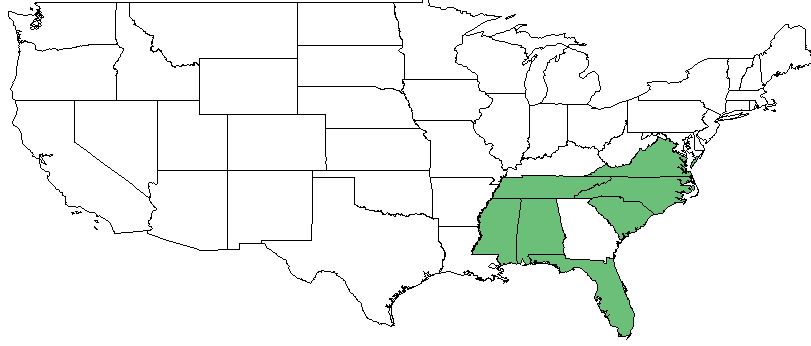Difference between revisions of "Dichanthelium curtifolium"
(→Ecology) |
HaleighJoM (talk | contribs) (→Ecology) |
||
| Line 36: | Line 36: | ||
<!--===Seed bank and germination===--> | <!--===Seed bank and germination===--> | ||
<!--===Fire ecology===--> <!--Fire tolerance, fire dependence, adaptive fire responses--> | <!--===Fire ecology===--> <!--Fire tolerance, fire dependence, adaptive fire responses--> | ||
| − | <!--===Pollination and | + | <!--===Pollination===--> |
| − | <!--==Diseases and parasites==--> | + | <!--===Herbivory and toxicology===--> |
| + | <!--===Diseases and parasites===--> | ||
==Conservation, cultivation, and restoration== | ==Conservation, cultivation, and restoration== | ||
Latest revision as of 14:26, 22 June 2022
| Dichanthelium curtifolium | |
|---|---|
| Scientific classification | |
| Kingdom: | Plantae |
| Division: | Magnoliophyta - Flowering plants |
| Class: | Liliopsida - Moncots |
| Order: | Cyperales |
| Family: | Poaceae |
| Genus: | Dichanthelium |
| Species: | D. curtifolium |
| Binomial name | |
| Dichanthelium curtifolium Nash | |

| |
| Natural range of Dichanthelium curtifolium from Weakley. [1] | |
Contents
Taxonomic Notes
Synonyms: Panicum curtifolium Nash; D. ensifolium (Baldwin ex Elliott) Gould ssp. curtifolium (Nash) Freckmann & Lelong; D. acuminatum (Swartz) Gould & C.A. Clark var. implicatum (Scribner) Gould & C.A. Clark; Panicum ensifolium Baldwin ex Elliott var. curtifolium (Nash) Lelong.[2]
Varieties: none.[2]
Description
D. curtifolium is a native perennial with a graminoid growth habit that is a member of the Poaceae family. [3]
Distribution
D. curtifolium is found in the southeastern corner of the United States excluding Georgia, ranging along the coast from Mississippi to Virginia. [4]
Ecology
Habitat
D. curtifolium proliferates in bogs, sphagnous streamhead swamps, mountain streams, and marl meadows. [4] It responds both negatively and positively to soil disturbance by roller chopping in South Florida.[5] However, it responds negatively to soil disturbance by agriculture in Southwest Georgia.[6]
Conservation, cultivation, and restoration
Cultural use
Photo Gallery
References and notes
- ↑ Weakley, Alan S. 2015. Flora of the Southern and Mid-Atlantic States: Working Draft of 21 May 2015. University of North Carolina, Chapel Hill, North Carolina. 1320 pp.
- ↑ 2.0 2.1 Weakley, A.S. 2015. Flora of the southern and mid-atlantic states. Working Draft of 21 May 2015. University of North Carolina at Chapel Hill, Chapel Hill, North Carolina.
- ↑ USDA Plants Database URL: https://plants.usda.gov/core/profile?symbol=DIDIE
- ↑ 4.0 4.1 Weakley, A. S. (2015). Flora of the Southern and Mid-Atlantic States. Chapel Hill, NC, University of North Carolina Herbarium.
- ↑ Lewis, C.E. (1970). Responses to Chopping and Rock Phosphate on South Florida Ranges. Journal of Range Management 23(4):276-282.
- ↑ Kirkman, L.K., K.L. Coffey, R.J. Mitchell, and E.B. Moser. Ground Cover Recovery Patterns and Life-History Traits: Implications for Restoration Obstacles and Opportunities in a Species-Rich Savanna. (2004). Journal of Ecology 92(3):409-421.